The Guardian Network is composed of ground stations, data centres, and a small constellation of 6U-class OrbAstro satellites. It provides:
- 24-hour access to satellites through an optical data relay inter-link and RF ground link
- Semi-autonomous satellite, mission, and constellation management
- Semi-autonomous space traffic management
The first Guardian Network satellite is booked for launch in early 2024. The network will be partially operational by mid-2025 and fully operational by mid-2026.
Developed in collaboration with:

All OrbAstro satellite platforms utilised by our customers have an optical inter-satellite communications system onboard for linking with the Guardian Network. Each Guardian Network satellite is optically inter-linked with its neighbours. The Guardian Network always has several satellites in contact with several ground stations. Thus, through this chain, there is always a low-latency link between a customer satellite and a ground station.
When a customer needs to uplink or downlink data from their satellite, rather than waiting until it passes over a ground station (i.e. typically 30 minutes access per day per ground station), they can do so immediately through the Guardian Network.
The optical transceiver has its own precision point mechanism, decoupling it from satellite ADCS. This enables link up with the Guardian Network, without disrupting the satellite pointing requirements for the customer’s mission.
Key Points :
-
- No need for customer to conduct spectrum filing*
- Uplink/downlink latencies eliminated (e.g. satellite commissioning takes days, not months)
- Downlink data-throughput capabilities considerably increased
*Unless the customer has additional RF systems onboard. If for whatever reason the optical subsystem fails, the customer can fall-back on the S-band system for ground communications.
All onboard health-checks are automated for customers utilising OrbAstro platforms. Health-checks are monitored in near real-time through the Guardian Network. This greatly reduces operational overheads for the customer and enables a swiftness to respond to anomalies, simply not possible through other means.
Low-level mission management of the customer satellite is automated. Target tracking, optimisation of down-link, orbital insertion, deorbit at end of mission, etc.
The Guardian Network provides low-level flock/constellation management for customer satellites. This tier of management is often neglected yet is vital for:
-
- Maximising performance (e.g. active formation maintenance reduces required # of satellites by typically 20-30% for a given level of mission performance/coverage)
- Increasing value proposition and broadening addressable market (e.g. optimisation for minimisation of latency and data-throughput/routing/backhaul)
- Maximising robustness of constellation service (e.g. automated reconfiguration to maintain performance and minimise disruptions due compromised satellites in constellation, natural attrition of constellation over mission lifetime, etc.)
Key Points:
-
- Operational overheads for the customer are reduced significantly
- Autonomy increases value proposition & markets addressable by customer
- For a given constellation mission specification, fewer satellites are required
Concerns over space debris and orbital collisions can be alleviated if there is a comprehensive monitoring and space traffic management infrastructure in place.
The Guardian Network precisely tracks the orbits of customer satellites to within a meter, in near real-time. Simultaneously, the network monitors orbital data of 20,000+ objects in LEO/MEO/GEO/HEO orbits (data sourced and automatically updated from various entities). This is achieved through a 1.2 petaFLOPS OrbAstro data centre (expected to be upgraded in Q4-2024 to 5 petaFLOPS).
When probability and confidence levels of a potential collision incident increase beyond a threshold, the Guardian Network suggests a minor satellite manoeuvre for the customer to confirm execution of. Consideration of the changes to the relationship between the customer satellite and other space traffic, due to the minor orbital change, plays a part in determining the nature of the manoeuvre suggested by the Guardian Network.
All satellites procured through OrbAstro are designed for compatibility with the Guardian Network and are subscribed to it for the lifetime of their mission. There are different levels of subscription package depending on the customer’s needs associated with daily data throughput requirements through the relay network, and the level of involvement associated with autonomous management.
- Baseline Package (per satellite) : £4,000/month*
- Data Relay (constraints: 500MB/day, 24 links/day)
- Space Traffic Management**
- Satellite Management
- Mission Management
- Optional Extras (per satellite) :
- Constellation Management: +£1,750/month (starting from)
- Medium Data-Throughput Subscription: +£1,000/month (constraints: 1GB/day, 36 links/day)
- High Data-Throughput Subscription: +£5,000/month (constraints: 10GB/day, 48 links/day)
- *Equivalent to typical fee for 20-mins daily access to a single ground station.
**This service aligns perfectly with the wishes of regulatory bodies and makes the paperwork process associated with launch licenses and payload permits significantly less onerous.

















